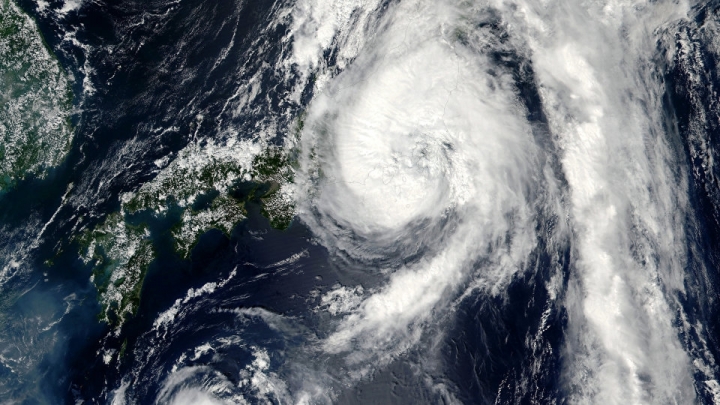Typhoon Lionrock strikes northern Japan, where 2011 tsunami and earthquake made havoc

Typhoon Lionrock made landfall in northern Japan Tuesday evening, bringing heavy rains, high waves and strong winds to areas devastated by the 2011 earthquake and tsunami, reports The Wall Street Journal.
The typhoon registered sustained winds of up to 125 kilometers an hour and gusts as strong as 180 kilometers an hour as it cut across the north, according to the Japan Meteorological Agency.
The eye of the storm was expected to reach the Sea of Japan by midnight Tuesday and then head toward northeast China. Lionrock is the fourth typhoon this season to make landfall in Japan and the first to hit the northeast from the Pacific Ocean since records began in 1951, according to the weather agency.
Unusual weather patterns have led Lionrock to take a slow and wandering path through the Pacific. It started off Japan’s eastern coast and initially headed south, before making a U-turn to the north and then veering northwest toward Japan’s main island.
Television broadcasts showed high waves lashing the Pacific coast and strong winds damaging vehicles and knocking down lampposts in cities battered by torrential rain.
Transportation was disrupted, with more than 100 domestic flights canceled due to the weather, according to national broadcaster NHK. Shinkansen bullet trains heading north were canceled, as were several ferry services operating in the typhoon zone.
Schools were also closed Tuesday in much of northern Japan. Evacuation orders were issued in areas in the typhoon’s path, while thousands of blackouts were also reported across a wide area. As of Tuesday evening, there were no reports of fatalities.
A swath of Japan’s northeast coast is still working to recover from the 2011 tsunami and earthquake that wiped out towns and destroyed infrastructure. The area is also home to the Fukushima Daiichi nuclear-power plant, which suffered multiple meltdowns in the incident and continues to undergo cleanup work.
Tokyo Electric Power Co. said offshore work would be halted and equipment would be bundled or stowed away during the typhoon to prevent accidents.
WEATHER
- Forecasters issued yellow warning of wind gusts with wind speed of 70 km/hour
- Typhoon Nida to hit Hong Kong after battering Philippines
- Japan turns on new nuke reactor after Fukushima woe
- 6-degree tremor hits Japan's coast. No tsunami alert
- Rain flooded several streets in Balti town
- Damaged roads and destroyed grape vines because of Sunday's rain